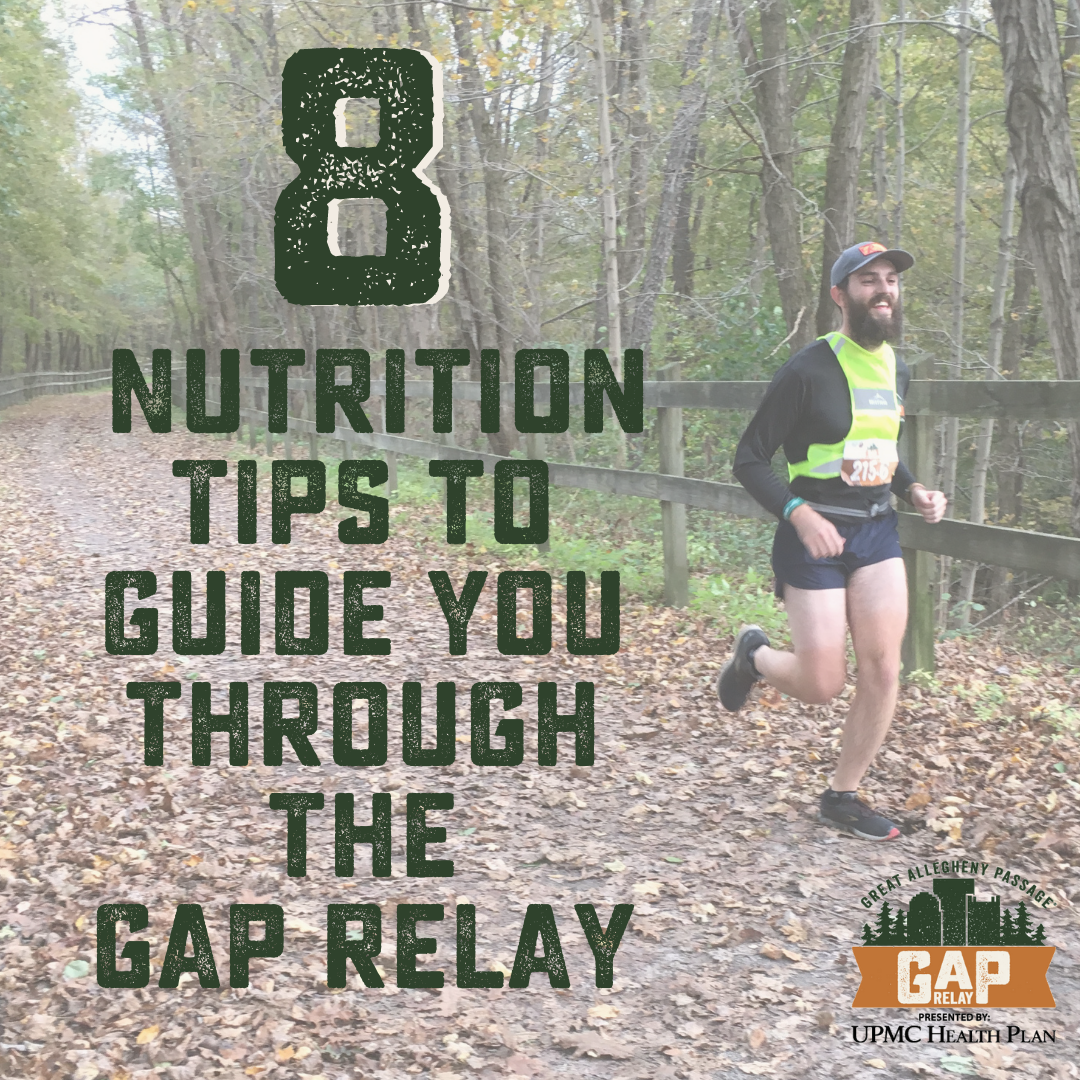
8 Nutrition Tips to Guide You Through the GAP Relay
In many races, nutrition is often overlooked as an important factor in performance. For a race this large it cannot be disregarded for your own safety and wellbeing.
There are 24 legs of the 150-mile course and 9 legs of the 60-mile course along the Great Allegheny Passage. While there will be snacks and food available at certain points throughout the course, teams are encouraged to have food options prepared and planned. As a Registered Dietitian that works with athletes in sports nutrition, I’ve seen the fail to plan, plan to fail too many times. Today, I’m sharing my advice for runners to help them fuel correctly for a race of this magnitude.
1. Plan meals and snacks with familiar foods
If you are eating out, it is probably better to explore options for the spaghetti meal you typically enjoy the night before a race vs that greasy cheeseburger that looks extra juicy. Some foods I recommend to bring are chocolate milk, PB&Js, yogurt, fruit, and bars like Clif or Rxbars. Try to fit in meals with real food when possible.
2. Go easy on the fiber
Although there are bathrooms at nearly every exchange zone along the way, they aren’t as plentiful on the trail. You don’t want to end up in a bad situation, or worse, in pain! Enough said.
3. Bring a cooler and pack your vehicle with friendly foods
Don’t forget about food safety - keep things safe and sanitary. Don’t forget to wash your hands before you eat (bring plenty of hand sanitizer) and keep cold foods at the appropriate cold temperatures.
4. Opt for smaller portions more frequently - 6 small meals vs 3 larger ones
Spread protein, fat, and carbs throughout the day and maintain a routine. Avoiding large meals and creating consistency can help minimize any GI distress.
5.) Fluids
While plenty of water is necessary, I would also recommend a sports drink. Powder is going to be the best option for storage, so start scouting out your favorite options now.
6.) Recovery
Try to consume a mix of carbohydrates and protein within 30 to 60 minutes of finishing the leg you just ran. Studies suggest a 3:1 or 4:1 carbohydrate-to-protein ratio, especially following a run longer than an hour.
7.) Have appropriate nutrition for fueling on the run - gels, gummies, etc.
The rule “nothing new on race day” also applies here - don’t experiment with something new or try to skip fueling on the go. Any amount of running over 1 hour requires fuel and the option to hit up a convenience store is not always so easy. I always recommend bringing fuel for shorter runs.
8.) Listen to your body, but be smart
If you are feeling hungry - eat. If you are full - stop eating. That being said, it is also important to remember the basic rules of endurance nutrition and make sure you are fueling before, during, and after runs.
If you have ever struggled with nutrition on race day, feel free to reach out to me for any questions or help! You can find me at dietitianjessnutrition@gmail.com or @dietitianjess on Instagram. Good luck and enjoy this awesome race!!
Written by Jessica DeGore
Jessica DeGore RD LDN CDCES CHWC is a Pittsburgh based, anti-diet dietitian who helps clients improve their relationship with food, body, and mind.